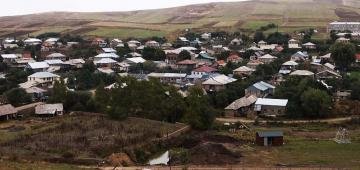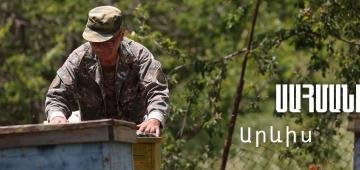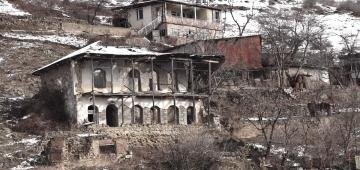
Tour the border villages of Armenia with us. Get to know our countrymen's talk, words and deeds, worries and joys. Meet the people who keep our borders alive.
 |
VahanThe border village of Vahan is the northeastern gateway to Armenia. The village borders Azerbaijan for about 27 km. In some parts, the border is only 2-3 km away. The century-old village has had other names in the past. It was founded in 1925 under the name Rubenakert, renamed Ordzhonikidze during the Soviet era, and in 1991 received its current name in honor of the brave eagle of Artsvashen, Father Vahan. |
 |
Arevis
The village of Arevis is located about 20 km from Sisian, but due to the poor road, it takes hours to reach the village.
Officially, Arevis has 41 residents, who live in the village intermittently, coming in the spring for agriculture and beekeeping. In the winter, barely ten residents remain in Arevis. Arevis is 4 km away from the enemy, but the reason the village has no residents is not at all its proximity to the border, but the lack of living conditions.
|
 |
The history and daily life of the border village of KhndzorutKhndzorut was founded by Armenians who migrated from the Khoy and Salmast regions of Persia as a result of the Russo-Persian War of 1826-1828. The residents of Khndzorut settled in the current area of the village later, starting in 1969. The history of Khndzorut is in the area called "Old Village", which is above the village. |
 |
JrapiOf the 311 km border between Armenia and Turkey, 72 km falls on Shirak province. Jrapi is one of 15 settlements in the province that has border status. The village was built in 1974. As a result of the construction of the Akhuryan reservoir, the villages of Nerkin and Verin Jrapi were merged and moved upstream. |
 |
BagaranThe Armenian-Turkish villages are so close to each other that the Bagaran residents are forced to hear the mullah's voice several times a day. Although the border village of Bagaran has many worries and problems, houses are being built and new Armenian families are being formed. |
 |
Aygehovit
Aygehovit was one of the first to bear the brunt of the war in the nineties and suffered significant losses. The village was founded at the beginning of the 19th century, where the people of Artsakh were resettled. The monuments testify that the village was inhabited even before that.
|
 |
Voskevan
Residents of Voskevan village of Tavush region live under direct enemy fire. In the lower part of the village, the enemy is active, they shoot with rifle weapons, they hit with tanks, artillery, and machine guns. Recognizing the enemy, the villagers claim that it is impossible to live with the Turk.
|
 |
Chakaten
Before the 44-day war, the enemy was more than 100 kilometers away from the village of Chakaten, now it is a few meters away from the houses of the village. The village and the road leading to the village are completely observed by the enemy. According to the villagers, the enemy has taken about half of the pastures.
|
 |
Shikahogh
Shikahogh village of Syunik region, which was not on the border before the 44-day war, now has a 30 km border with Azerbaijan. After the last attack of Azerbaijanis, occupation of positions and territories, it became impossible to work in the fields. The arable lands in the administrative area of the village were targeted by Azerbaijan. There is no distance and neutral zone.
Facing all challenges in Shikahogh, which is targeted by the enemy, the Armenian peasant lives, builds and creates without complaint.
|
 |
Barekamavan
If the so-called enclaves are handed over, the village of Barekamavan will be in a desperate situation. At this moment, the enemy is on three sides of the village. The front with a length of about 18 km is directly related to the Azerbaijani positions, which are located at a distance of 7 to 800 meters from the village. Most of Barekamavan's arable land is now under enemy control.
|
 |
Berkaber
More than 900 hectares of orchards are under enemy control
Berkaber community
Berkaber was one of the hot spots of the war in the early 1990s. Almost all the buildings of the village were damaged by shelling. Around 900 ha of orchards of the villagers are currently under the control of the enemy.
|
 |
ParvakarThe village of Paravakar, Tavush region, RA, is directly bordered by Azerbaijan. For more than 25 years, around 1,400 hectares of arable land in the village have been under enemy fire. How old people live and work, they tell themselves. |
